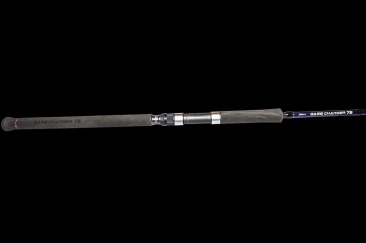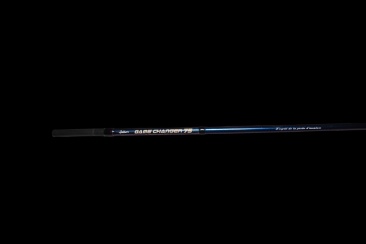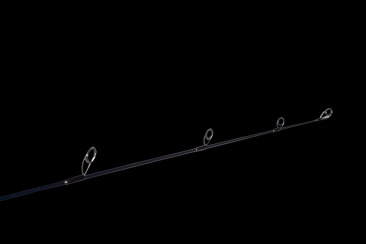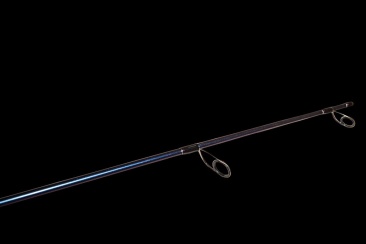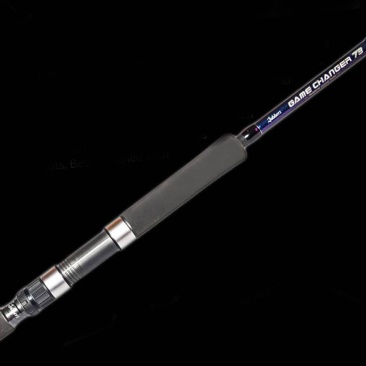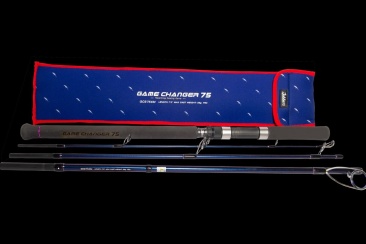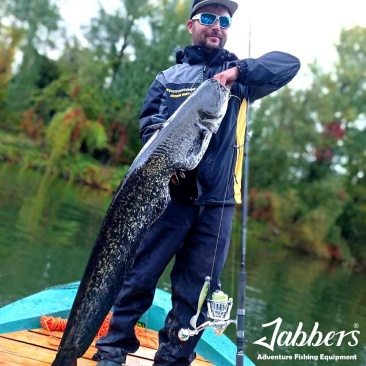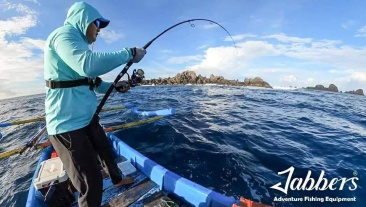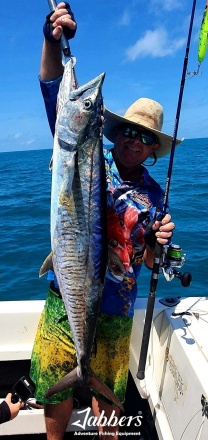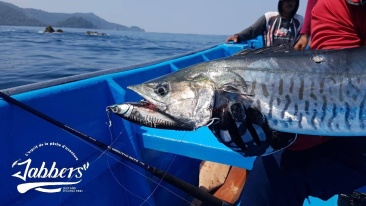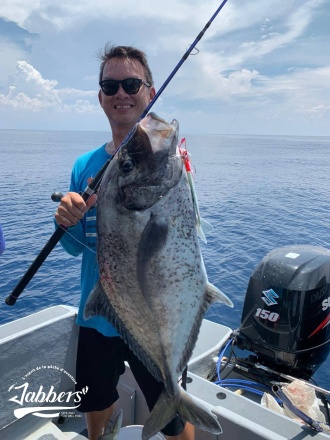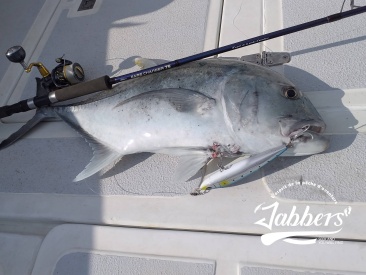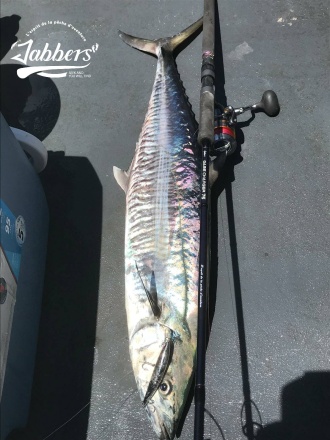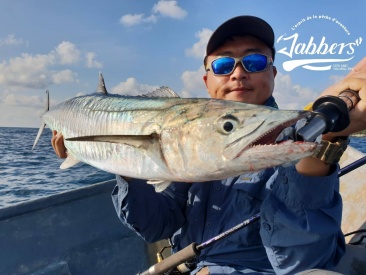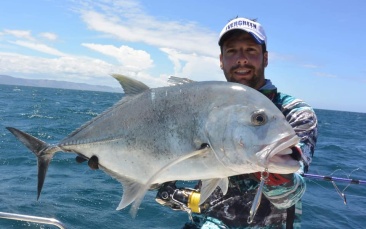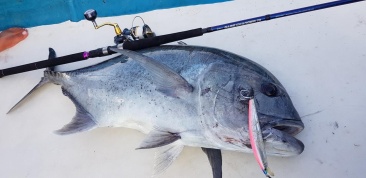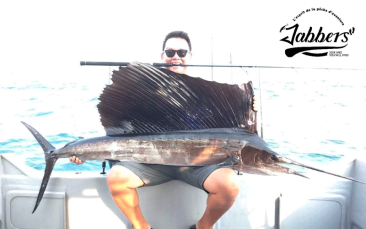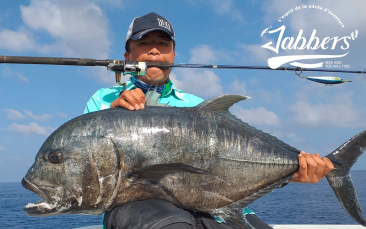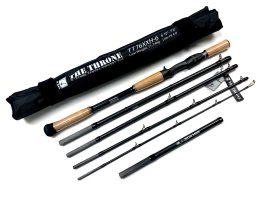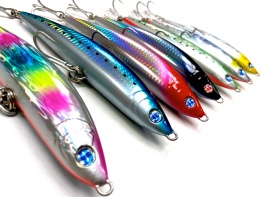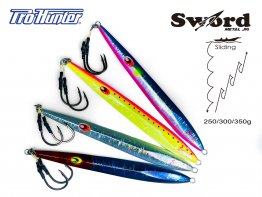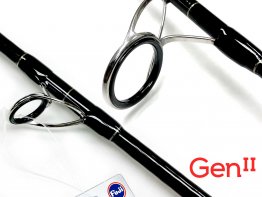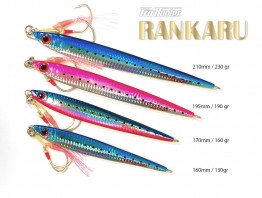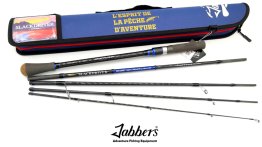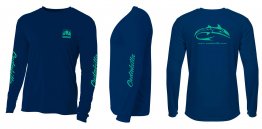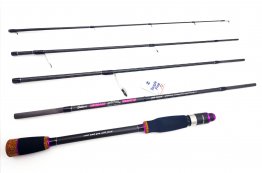Jabbers Game Changer Travel Spinning Rods
-
Rod Care
Please Read Section on Common Sense Use and Care of Multi-Section Rods
Jabbers was conceived by fishing tackle designers who were crazy about freshwater monster fish and aspire to conquer as many species as possible in their lifetime.
Due to the unavailability of travel rods for their specialized fishing needs, they set out to design rods for this monster quest – multi piece rods that could be packed in small haversacks for ease of traveling, with the sensitivity of a single piece rod, yet robust enough to handle powerful fishes.
The first prototypes quickly drew strong interest from like-minded monster fish enthusiasts from France and Indonesia, and the Jabbers team was formed. The initial concept of targeting freshwater river monsters quickly escalated to area specific solutions for demanding anglers.
We at Cudakilla were fortunate enough to test these rods out thoroughly and they were outstanding in terms of build quality and price. True to our goal of providing carefully tested and curated products for the discerning fishermen, we are now proud to represent this up and coming brand to the western market. We're sure you're going to be just as pleased with the versatility and performance of these rods as we are.
The Jabbers Game Changer series of rods are designed for heavy inshore luring and for targeting large freshwater game. Construct from light but strong high modulus carbon these rods are easy to work all day. The long butt section facilitates two handed casts to reach the shy offshore species. Its iridescent blue finish is a thing of beauty in bright sunlight. Built with best of class components.
The Jabbers Game Changer 754M is a 4-section saltwater casting rod for casting smaller stick baits and sinking minnows to target pelagic species such as Spanish mackerels and Sailfish in open water. Rated PE3, this well-balanced rod has a sensitive tip to easily twitch surface lures, yet retains full control when burning sinking minnows at high speed. Combines with a strong backbone to easily propel lures to great distances, even in un-favorable wind conditions. A light and powerful rod that is a pleasure to cast all day long.
The 754M is best matched with size SW4000 reels.
Length: 7’5” – Power: M – Lure Max: 56g – Line: PE3 (40lb)
The Jabbers Game Changer 734MH is a 4-section saltwater casting rod designed for medium size stickbaits and poppers, as well as heavy sinking minnows. Rated PE4, it offers more power than the PE3 model and has a stiffer tip for chugging poppers. Best appreciated when fishing near rocks and in shallow reefs, the Game Changer 73 has proven its worth against many hard fighting fishes such as GTs and big coral trouts.
The 734MH is best matched with SW6000 reels.
Length: 7’3” – Power: MH – Lure Max: 80g – Line: PE4 (50lb)
All Jabbers rod sections can be replaced individually. You don't need to buy the whole rod if you inadvertentyly break a section.
It is important to occasionally check that all joints are secure during a day of hard fishing as loose joints can result in premature failure of the rod. See section on rod care.
Thank-you for your purchase. Even if you have a fully warranted rod. Common sense rules for its proper use and care.
Assembly:
Pre-assemble sections by slowly aligning and slowly rotating sections into each other. Do not snug up connections yet.
Once assembled, align the sections by sighting along the rod and rotating sections to ensure that the guides are all aligned correctly. The sections of all the rods we ship have been checked to ensure that they fit correctly. A thin layer of wax has also been applied to ensure that the sections do not get stuck together after prolonged use.
Once aligned, snug up sections firmly. The rods are designed to have AT LEAST 70% of the exposed male portions fit inside the female part when snug. DO NOT force or jam sections together excessively.
Disassembly:
Method #1:
Slowly rotate AND pull the sections apart. DO NOT EVER use the guides for leverage. Utilize the grippy rubber side of the supplied rod straps if additional grip is needed to pull and rotate sections apart. A pair of disposable nitrile gloves comes in very handy for this as well. If the sections are difficult to take apart, a second person may be needed. In this situation it is best if each person has one hand on each of opposite sections. NOT both hands on one section. Once positioned, both persons will slowly rotate and pull the sections apart in unison. Apply 70% pressure to rotating and 30% pressure to pulling the sections apart.
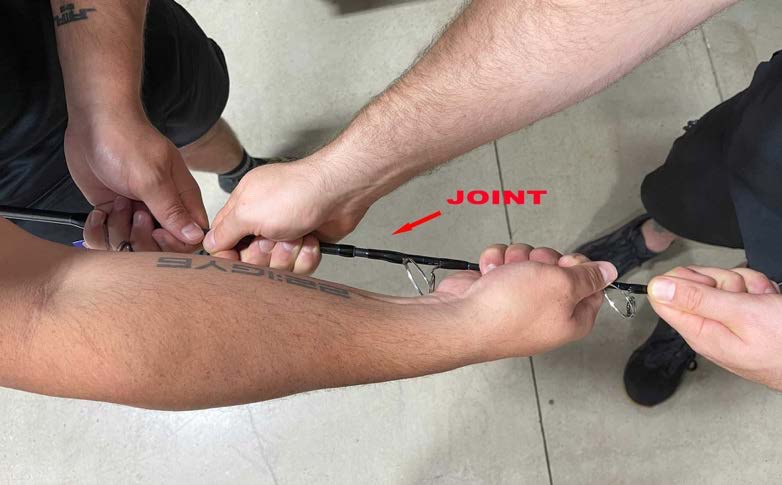
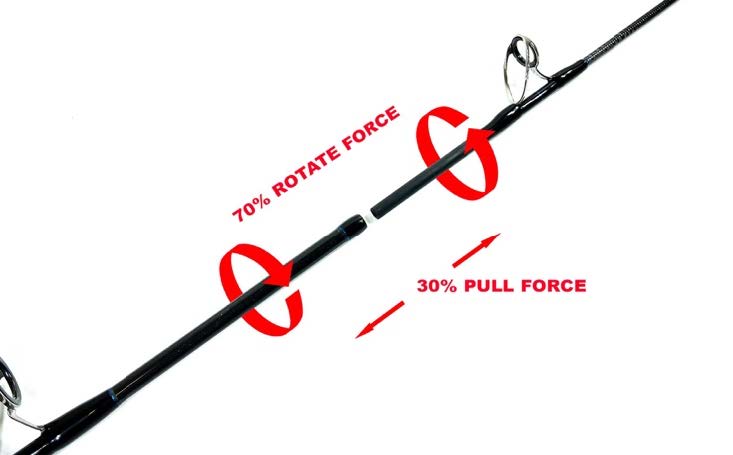
Method #2
Using the neoprene side of the rod straps(or any grippy material), wrap the straps around each of the sections to be removed. (!Make sure to not place any pressure on the guides!). Using a firm grip on each section, place the rod behind your knees and slowly spread you knees apart until the sections are separated.


Care and Maintenance
• Ferrules . . . these are normally hardy connection joints that do not require a lot of attention. Apply a thin coat of wax or dry soap to
the male ferrule to ease assembly and disassembly. We’ve found that common lip balm works very well. Clean the connections
after each use and ensure that there is no excessive build up of wax or debris. The ferrules are not designed to fit all the way. So
do not force them in too tight. Over time and use, they will snug in further. So do not attempt to sand the male sections so they fit
further into the female sections. It is important over an extended period of fishing to check that the joints are snug. One of the major
causes of failures is due to sections coming apart during the course of fishing.
• Guides . . . Check the integrity of your guides by "sighting" down the assembled rod so you can see bent or misaligned guides;
minor bends or twists in guides can usually be corrected with careful pressure; do not use "toothy" pliers on guides as they will
leave rough areas that will damage lines; otherwise, keeping guides free of debris and dirt is a periodic duty. NEVER use the
guides as leverage when twisting, aligning or disassembling rod sections. Misaligned guides during fishing are usually an indicator
of sections coming loose and need to be snugged back in. Loose sections are a common cause of rod failure.
• Guard against knicks . . . It is best to avoid colliding your rods with sharp objects, such as hooks, rocks, split shot, etc.; these and
other impacts can damage the rod's fibers (regardless what the rod is made of) and encourage breakage at the weakened spot.
• Immovable objects . . . No rod is meant to be used as a lever in a stubborn attempt to move the immovable; if your line is caught on
something, do not use the rod to jerk on the line; rather point the rod in a straight line toward the source of the snag and pull
steadily until the lure or leader breaks.
• Rod pressure . . . When fighting large fish or strong current, use the rod in a sideways angle as opposed to straight upright; this
lessens strain on the rod and is often a better tactical position. ALWAYS avoid ‘High Sticking’. It is also important during the course
of fishing to check on the snugness of all the joints of the rods. One of the most common causes of breakage is the ferrules coming
loose during fishing.
• Cleaning . . . Rinse and wipe your rod off after each use before storage; if used in saltwater, be sure to wash it off with freshwater
and allow it to air dry before storage; do not store a wet rod in an enclosed area or sealed container, as it can mildew handles and
cause swelling/rotting of the cork.
• Storage . . . store each of your rods, and each section singly in (a) a cloth rod bag and (b) a hard rod case; (we favor the tips of
both the butt and sections of our rods facing downward in these cases to protect them). Do not store rods in excessive heat, e.g.,
trunk of your car. Do not store away wet rods.
• Chemicals . . . Avoid exposing rods and cases to harsh chemicals such as petroleum products, insect repellent, etc.




